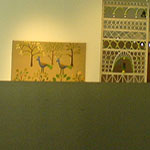Euroacademia Conferences
 Europe Inside-Out: Europe and Europeanness Exposed to Plural Observers (9th Edition) April 24 - 25, 2020
Europe Inside-Out: Europe and Europeanness Exposed to Plural Observers (9th Edition) April 24 - 25, 2020 Identities and Identifications: Politicized Uses of Collective Identities (9th Edition) June 12 - 13, 2020
Identities and Identifications: Politicized Uses of Collective Identities (9th Edition) June 12 - 13, 2020 8th Forum of Critical Studies: Asking Big Questions Again January 24 - 25, 2020
8th Forum of Critical Studies: Asking Big Questions Again January 24 - 25, 2020 Re-Inventing Eastern Europe (7th Edition) December 13 - 14, 2019
Re-Inventing Eastern Europe (7th Edition) December 13 - 14, 2019 The European Union and the Politicization of Europe (8th Edition) October 25 - 26, 2019
The European Union and the Politicization of Europe (8th Edition) October 25 - 26, 2019 Identities and Identifications: Politicized Uses of Collective Identities (8th Edition) June 28 - 29, 2019
Identities and Identifications: Politicized Uses of Collective Identities (8th Edition) June 28 - 29, 2019 The European Union and the Politicization of Europe (7th Edition) January 25 - 26, 2019
The European Union and the Politicization of Europe (7th Edition) January 25 - 26, 2019 7th Forum of Critical Studies: Asking Big Questions Again November 23 - 24, 2018
7th Forum of Critical Studies: Asking Big Questions Again November 23 - 24, 2018 Europe Inside-Out: Europe and Europeanness Exposed to Plural Observers (8th Edition) September 28 - 30, 2018
Europe Inside-Out: Europe and Europeanness Exposed to Plural Observers (8th Edition) September 28 - 30, 2018 Identities and Identifications: Politicized Uses of Collective Identities (7th Edition) June 14 - 15, 2018
Identities and Identifications: Politicized Uses of Collective Identities (7th Edition) June 14 - 15, 2018
Social Accessibility: Relationally You, Relationally Constructed
-
-

-
Presentation speakers
- Lorena Morales, Independent Scholar, New York, USA
Abstract:
American black art is consistently interpreted as a political, economic, social and psychological response to slavery and racism. Art historical scholarship on American black art has a tendency to celebrate the lone, token black artist: the artist of rare genius by virtue of minority and marginality. Apart from the infrequent editor, curator and academic, black artists and their production have been denied universality by such codified statements masquerading as criticism. It is mainly within the domain of black cultural studies that rich, intertextual scholarship on black art has been produced. The oeuvre of Glenn Ligon, who rose to international recognition during the identity politics of the 1990s, carefully examines the trope of being a black man in the (art) world. Further, the trope of being a black, gay man in the (art) world. Ligon’s 2011 midcareer exhibition / installation Glenn Ligon: America at the Whitney Museum of American Art created an active dialogue between Ligon’s works and the public. Many of Ligon’s works incorporate text, which require active readership, speaking, on the part of the viewer, thus creating a direct discourse between established, localized, subjective ideas of universality and marginality, black and white, gay and straight. Nicholas Bourriaud’s Relational Aesthetics of 1991 argues for art works that require such interaction amongst the audience. Bourriaud considers relational aesthetics as an ideal construction of artistic form and content intent on recuperating social man post-Modernity, post-Isms. Bourriaud argues that resolution to or mediation of racial, political, and gender discourses are not intended for the pure (idealized) form, space, and time of a participatory work of art. This paper assesses the accessibility of Ligon’s aesthetic vis-a-vis that of Bourriaud, examining the inherent difficulty of casting relational aesthetics in a Greenbergian formalism. This paper culminates in the very real (not ideal) problem of “participation” as experienced by Ligon, where the locus of “participation” occurs primarily in Ligon’s own persona, before being cast as public dialogue. Arguably, Ligon relevantly uses himself as a living example to recuperate social man from social man himself. -
Related Presentations

The Work In Communities
- Claudio Ribeiro

Test of Okun’s Law in Albania During the Period 1995-2010
- Dritan Shoraj
- Fejzi Kolaneci

The Eurozone Crisis: Transformative Impact on the European Project and Model(s) of Capitalism
- Davide Bradanini















